A Former Pro Triathlete Hits the Gravel
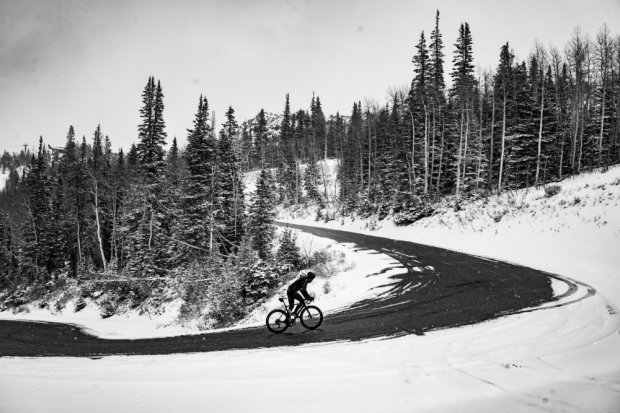
After a foot injury ended Barrett Brandon’s pro triathlon career, the Texas native pounced on a job at Ventum, moved to Utah and fully embraced the mountain lifestyle.
Slowtwitch: A quick peek at the 10 day forecast for Park City shows 32 and snow. As a Texas native who chased the endless summer during your pro triathlon career, what does your Strava activity feed look like these days?
Barrett Brandon: A lot of indoor riding, that's for sure! With my work schedule and the short winter days, I am inside weekdays this time of year and try to go outside when the weather permits on weekends. When I moved here a friend told me to embrace the seasons or you won't survive. Still: it's cold! Summer is incredible here, however. I don't miss Texas summers.
ST: Have you tried skiing yet?
Barrett: I have gotten into ski touring this season for some cross-training. Before December, I had never skied before in my life. Even growing up we never went on vacation, so I am a true newbie. About 2-3 times a week I skin up our local mountain and then do my best pizza down. I am still at the point where going down is actually harder than going up. I also have yet to ski from a lift, so I guess I am learning the hard way.
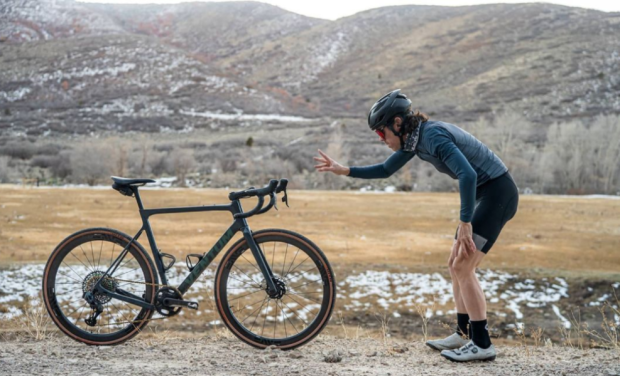
ST: What prompted your move from Texas to Utah?
Barrett: I moved here to work for Ventum. The company relocated our operations from Miami and Boulder to Park City and I came on board as part of that move.
ST: What is your role at Ventum? What has the workplace environment been like throughout COVID?
Barrett: At Ventum I run Finance and Operations. Being a slightly smaller company, we have quite a bit of cross-functional collaboration by our teams so the scope of what I do on any given day is fairly broad. As a company, and compared to many other business and individuals, we have been fortunate during COVID. We continued to grow the brand, we launched our new gravel bike, and have managed to maintain a safe work environment for our employees. That is not to say 2020 was without its challenges, but we are excited about the road ahead.
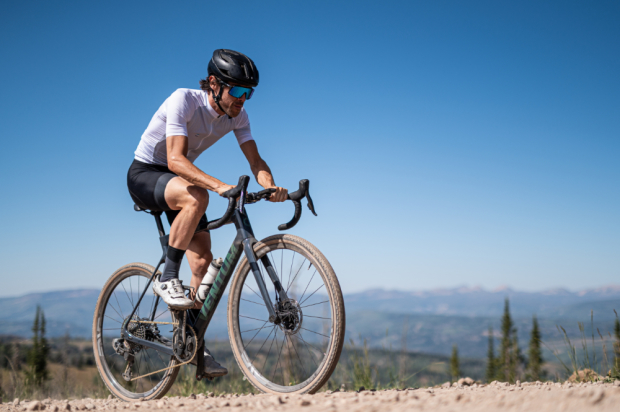
ST: 2020 looked like a return to racing for you, but in a new backdrop. Why do you think gravel was the spark to get you racing again?
Barrett: I started riding to get back in shape and around that time we started our GS1 gravel development at Ventum. Before I knew it I had signed up for pretty much every major race in 2020. Also, coming from Ironman, I just seemed to naturally gravitate towards the longer events, and gravel is perfect for that. Even though COVID changed my initial plans, I was able to get in a few races towards the end of the year.
ST: Is there anything in particular you experienced or noticed that makes the gravel community uniquely welcoming? Do you have any advice on how to get started for those triathletes who might be considering giving gravel a try?
Barrett: The biggest thing I noticed is just the laid-back atmosphere, and the general feeling of inclusivity. You come as you are. You don’t have to have the fanciest gear, and it really seems people are there for their own adventure and shared experiences. I certainly take a more performance-centric focus than some, but plenty, if not most, are there for adventure and the challenge. Can you even do a gravel race and not drink a beer at the end with your friends? Whereas you contrast that experience with your local CAT 5 crit or IM Kona and those feel like a different world.
If you are looking to get into gravel, I would first suggest getting a dedicated bike even if it is just an entry level model. I would make sure you know how to change a flat (and plug a tubeless tire) and either go with someone else or let someone know where you are. Be prepared for minor mechanicals as things can often rattle loose. Bring extra food and water as routes always take longer than you think. Other than that, make a new route, go explore, and have fun!
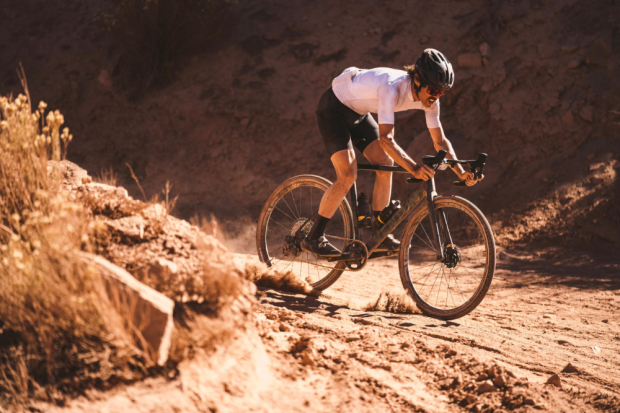
ST: What adjustments did you make after your first race that helped you at Fistful of Dirt and BWR Cedar City? What changes did you make in your equipment setup or the way you trained?
Barrett: If you want to race well at gravel, you have to be able to respond to constant pace changes and also deal with a high-powered and frantic start. While most races last 5-10+ hrs, it is full on from the gun trying to establish your position. I spent most of quarantine in early 2020 working on those areas. As for implementing it, I managed that well at Fistful of Dirt, but got caught out and spent most of the day chasing in BWR Cedar City.
For my setup, I am continually learning and tinkering. One of the design imperatives for our GS1 was stability at speed on gravel. We developed the geometry and our dual position fork dropout to specifically address this. I run 700c wheels in our "long" (5mm greater offset) position to slow steering inputs for a less twitchy front-end during long days.
Tire choice and tire pressure are crucial. When in doubt, probably go lower pressure. I think I went through at least 15 sets of tires in testing for Ventum (sorry mechanics) trying to find the best one to race on and to spec for our brand. In regards to width, wider is generally better. I raced on 43mm Gravel King SKs this year and they worked well. They were a fantastic mix of volume, grip, and speed over all kinds of terrain. I also opted for the Enve G23 gravel wheel as opposed to their deeper and slightly more aero AR series. I found the compliance and flat protection they offer outweighed and outperformed a slight aero advantage on a lot of courses.
All it takes is one unfixable flat, a dying headlamp, and being completely solo in darkness in the middle of a Florida swamp before you decide to never run aggressive tires again.
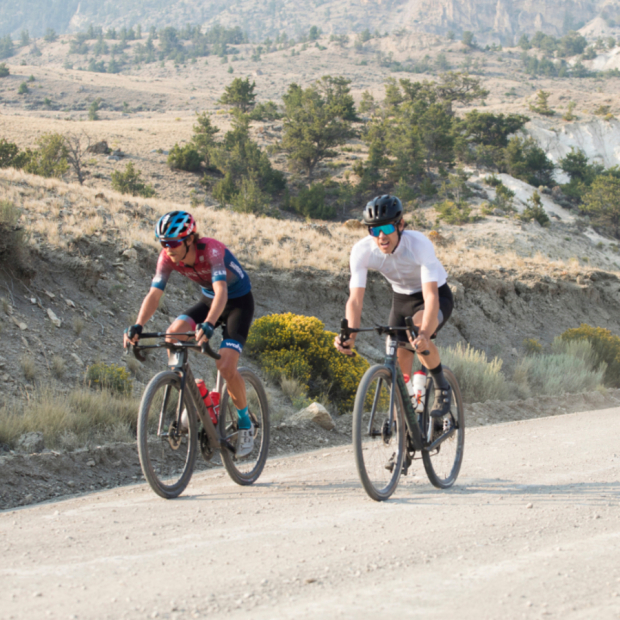
ST: What is the story behind ending up in a Florida swamp?
Barrett: The short of it is that I showed up to a 200 mile gravel race in January overconfident and under prepared. I rolled up with 31c tires because I thought they would be faster for the "light" gravel. I also chose not to have a front light (the race started in the dark) and just use a blinky because I would be around others at the start and then be done before dark. I had never used GPS turn-by-turn or put a plug in a tubeless tire. Fast forward about 16min into the race and I didn’t see a rock and ripped my tire sidewall open. I hastily tried to fix it and get back on the bike, but I lost my saddle bag, and then proceeded to miss the next few turns. My plug didn't hold, and suddenly found myself alone, with a dying light, and a completely flat tire and no spares, in the dark in the middle of a sugar cane field. I ended up walking most of the way back to my car. My first ever gravel race was a spectacular DNF where I made it all of 5 miles.
ST: We noticed at Fistful of Dirt the breakaway group included Peter Stetina and Paul Thomas. How did you find it riding isolated with two experienced cyclists? Did you share a common goal of working together or were there games being played out?
Barrett: It was really fun riding with those guys. They both have so much more bike racing experience than I do, and it was great to see that play out in a race in real time. Pete and I got a gap on the early climbs, but Paul always clawed back on the flats. It was nice to have a 3rd person to swap turns, so a few times we waited for Paul. Once the race gets established, gravel seems to be pretty friendly until the end: we agreed to stop at some aid stations together and wait for each other during nature breaks. It is this unique dynamic in that you are racing, but there are some unwritten sportsmanship rules. However, at about mile 65, Stetina started to apply pressure and Paul and I were eventually distanced. I was able to gap Paul on the last main climb and get 2nd which was a good finish for me. It was a great learning experience, and tons of fun.
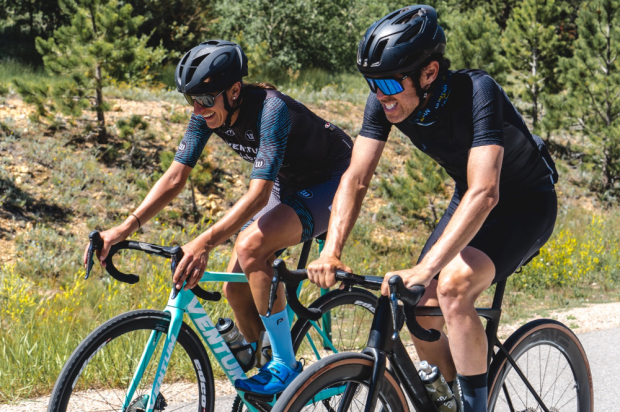
ST: As a pro triathlete the bulk of your career was on the ITU circuit before turning to non-draft and Ironman racing at the end. You raced for a long time. Can you tell us what it was like when you decided to step away from the pro triathlon lifestyle of training and racing?
Barrett: I had foot surgery at the end of 2017 and a return to racing never materialized. My non-triathlon work life started to pick up as I was recovering from surgery, so it became an easy transition. Looking back, I had been competing at a pretty high level in sport since high school and it was the right time for a pause. It took a couple years for me to rekindle that competitive fire, but it seems that racing gravel has done that. I think for me, having an athletic goal and working towards that is extremely important and helps anchor the other parts of my life. I also find that when I have focused on structured training, I am more productive at work. It just seems to work well for me to still have some sort of competitive outlet.
ST: Do you have any big challenges or races planned for 2021?
Barrett: I'm pretty much signed up for all the big races. Right now I am planning on doing BWR, Unbound (formerly Dirty Kanza), Tushar, Leadville/SBT GRVL double, Fistful of Dirt and The Wasatch All-Road. Ventum is the Official Host of the The Wasatch All-Road, which is a new race for 2021, and a big goal for me. It is the groads I train on daily, so will hopefully have some local advantage, be an epic course and it should be a super competitive race! I have an ambitious (for me) racing schedule this year, but also should find time for some bike adventures into the backcountry this summer too. Hopefully we will be able to race a few times more than last year!
You can follow Barrett on Instagram at @barrettbrandon_.


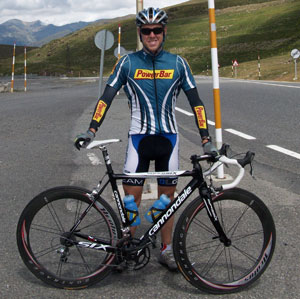
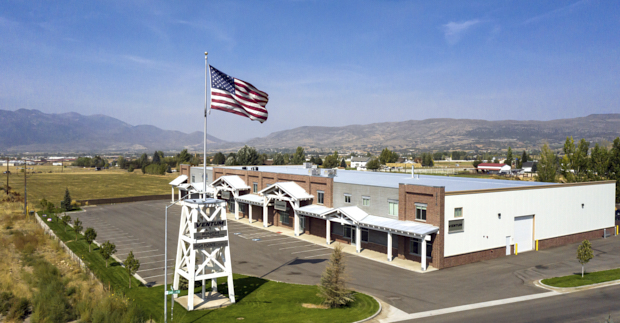
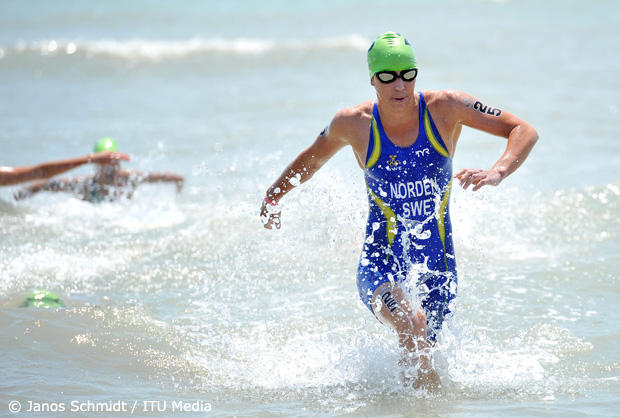
Start the discussion at forum.slowtwitch.com